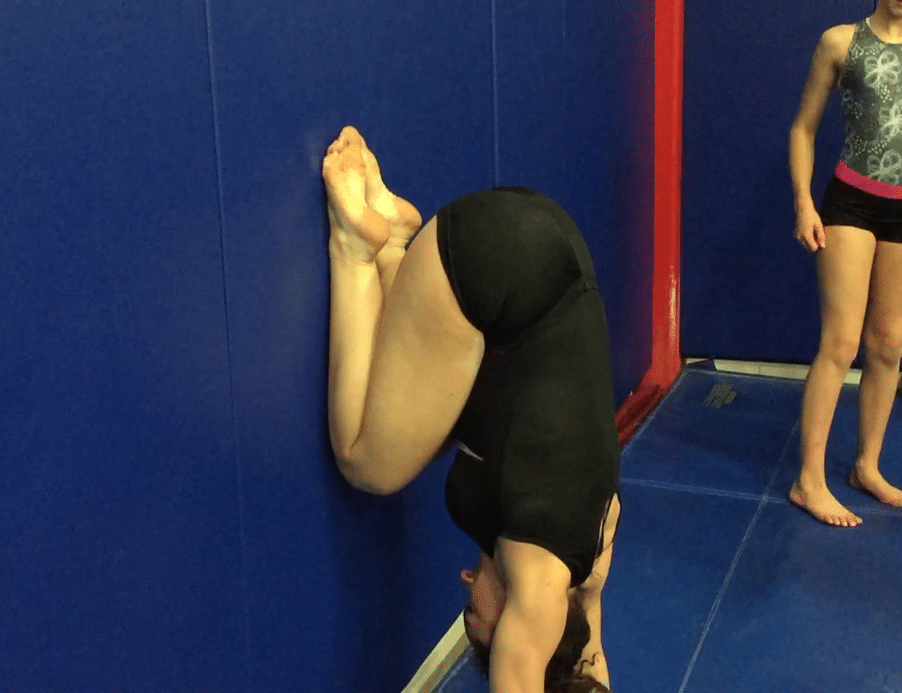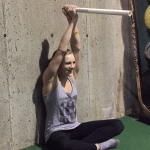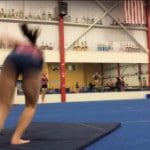Video Quick Tip! Full Tuck Handstand Drill For Overhead Strength
Here is a drill that I learned a lot time ago, but have recently been using a lot more putting my own spin on it. I think it’s great to work weight bearing, end range shoulder control without allowing rib flare cheating. Many gymnasts will find it extremely tough when they are not allowed to rib flare, and are forced to use their shoulder blades / shoulders for the end range motion rather than extending their lower back.
Have the athlete start with knees tucked up on the wall, then slide their knees down the wall and walk their hands closer at the same time. Continue until their knees are as far in as possible to a tucked position. They should use their knees to help block and depress their lower ribs. Then, have the gymnast brace their core, exhale, and “push the floor away” to open their handstand. This is one of my favorite drills for a lot of different reasons,
- The full tucked knee positions acts as a way to depress the rib cage, helping force the gymnast to use all of their overhead mobility. Many gymnasts are forced into rib flaring due to excessive latissimus / teres major / other soft tissue restrictions, poor core control, limited thoracic mobility, and a lack of end range shoulder control. You can screen these components out more in depth if within your skill set.
- Ideally, exhalation into rib depression coupled with a “push the floor away” cue for overhead motion helps drive the scapulas to upwardly rotate and posteriorly tilt during on the rib cage overhead motions. We are looking to enhance the serratus anterior, lower trap, and upper trap synergy in a weight bearing position along with helping the rotator cuff musculature co contract to stabilize the humeral head at end range
- It’s a great way to work gymnastics specific skills and use new found motion at the end of a shoulder mobility complex
- Very easy side station that requires no additional equipment besides wall, but has lots of anatomically rationale to maximize handstand skills
Remember it may not be a ideal total handstand position, but we are working just the upper body component of the upper spine and shoulder mobility. Be cautious about about overly mobile gymnasts who should not push to their excessive end range. No shoulder “pinch” type pain should be felt on top or in front of the shoulder during the end range motions. Give it a shot, and hope it helps.
Dave Tilley DPT, SCS



